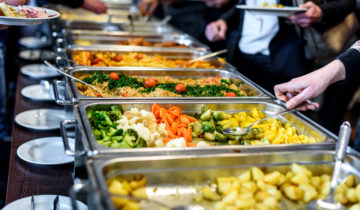Restaurateurs, why should you adapt to offer meal deliveries and click & collect, and how?
Now that society is free from constraints relating to the supply, processing and storage of food, the time to eat is literally any time we want. The popularity of meal deliveries is undoubtedly the most striking manifestation of this new, more casual attitude toward meals, particularly in countries like France where the moment of sitting down to eat together is sacrosanct. While some restaurants have been receptive to this trend since at least the middle of the previous decade, others had to hurriedly adapt to survive the pandemic.
Home deliveries and click & collect are turning the traditional restaurant business model on its ear
The food delivery market had previously struggled to get off the ground in France, by comparison to certain other European countries, most likely due to cultural reasons. There, Generation Z has long accounted for the largest proportion of home meal deliveries.
In the end though, France has fallen into step with the growth rate of the European market for home deliveries, at an average of 20-25% between 2015 and 2020. In other words, meal deliveries represented a thriving business well before the pandemic, although COVID really sped it up by several years, now reaching new target audiences, especially families and adults 35 and over on the consumer end and traditional and/or Michelin-starred restaurants on the professional side. According to a study conducted by the Food Service Vision institute, deliveries could account for as much as 19% of total restaurant sales in France by 2024 (compared to around 7% in 2019).
Home meal deliveries and click & collect (orders placed online and picked up on site) have allowed restaurants to lessen the impact of COVID on their businesses whilst positioning themselves on a vibrant growth market. These practices, which can logically be expected to persist in the “new normal”, are pushing sit-down restaurants to revisit their existing business models in order to activate this additional source of revenue.
Meal deliveries and click & collect: Platefuls of benefits for restaurants
The times are changing, but the economic system remains the same for any business: you have to adapt to consumer demand. Delivery and click & collect services are no longer much of a differentiating factor for restaurants. In fact, 25% of sit-down restaurants now offer those options. Although it’s too late to be a pioneer in this area, restaurants can still expect multiple benefits from these different forms of takeaway, including:
- Average bills that are 80% higher than dine-in bills
- A broader customer base with new target audiences
- An expanded catchment area
- Partial revenue security in the worst-case scenario of recurring COVID outbreaks
- Optimized production processes and a degree of freedom from the structural limits of a brick-and-mortar location (finite number of tables, etc.)
- Reduced inventory losses due to wastage.
How can you “make room” for meal deliveries?
Restaurateurs who want to begin offering a home delivery service will need to rethink their menus and their organization in order to thrive. That thought process should begin with the plan’s profitability. Calculations of cost prices will need to include the fees charged by any online food ordering platforms used (which tend to be 10-30% of the total price of an order), the additional set-up time needed, takeaway packaging, storage, etc. Restaurants are also expected to be able to adapt their menus for delivery because:
- Some dishes travel better than others (in terms of taste and/or presentation)
- Not all of the dishes on a menu will necessarily be profitable for delivery
- Complicated dishes that require a lot of prep time may lead to frustration amongst customers
- Some food “continues to cook” even after it is packed for delivery, like steak, whose internal temperature can keep rising during transport, resulting in a dish that is more well done than when it came out of the kitchen
- For obvious reasons, sauces and other condiments need to be packed separately.
It could also be helpful to establish a maximum distance from the restaurant to ensure that the dishes are delivered within the allotted time frame (under 45 minutes as a general rule) and under good conditions. More broadly, delivery menus tend to be shorter, featuring 15 to 20 dishes that are profitable and travel well. Lastly, because delivery menus are by definition digital, they need to be attractively laid out, with appealing, professional quality photos.
Cocotine can give you the tools you need to handle the latest trends in food service
Cocotine is here to help you adapt your daily routines to your diners’ changing food habits. Lastly, Cocotine has a special fast food cookbook of inspired recipes that are easy to prepare.






